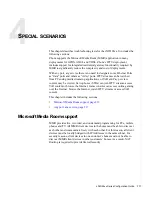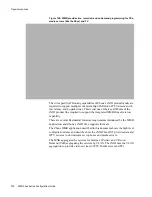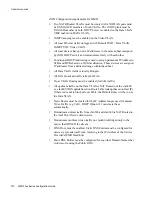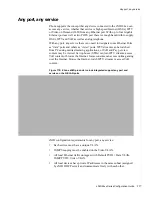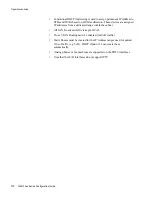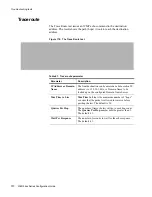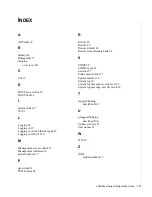
Configuration
210
zNID 24xx Series Configuration Guide
Data services
Rate limiting
Rate limiting is done on a per-physical-port basis, not on a per-VLAN basis.
Rate limiting is a mechanism for controlling traffic and can include policing
(dropping packets). Use rate limiting to control the rate of traffic sent or
received on a physical port. Received traffic that is less than or equal to the
specified rate is forwarded and traffic that exceeds the rate plus the max burst
size is dropped.
After configuring an interface with rate limiting, the inbound traffic rate is
monitored and if the rate exceeds the specified rate, a pause frame will be sent
to the device connected to the port to stop the incoming traffic. If the
connected device does not support pause frames, then the excessive data will
be dropped.
The inbound and outbound rates are independent. This allows for symmetric
or asymmetric rates (to emulate ADSL for example). The rate limiting in
either direction can be disabled by entering 0 (zero) for the data rate.
For rate limits less than 100 Mbps, the rate can be set in 1Mbps increments.
For rate limits greater than 100 Mbps, the rate must be set in 8 Mbps
increments. The system will automatically adjust the value entered to an
appropriate rate if necessary.
For the outbound direction, the data will be sent at the rate specified.
Outbound data is mapped into different queues based on priority. Strict
Priority scheduling is used for the Critical priority queue and WRR
scheduling is used for the High, Medium and Low priority queues. The ratio
is 16 packets from the high priority queue, 8 from the medium queue and 4
from the low priority queue.
The max Burst Size parameter specifies how much a single burst of data can
exceed the inbound rate before packets are dropped. The default setting is
500k bytes.
Figure 166: Rate limits per interface
Summary of Contents for zNID-GE-2402
Page 12: ...About This Guide 12 zNID 24xx Series Configuration Guide ...
Page 18: ...zNID 24xx Series 18 zNID 24xx Series Configuration Guide ...
Page 84: ...Management 84 zNID 24xx Series Configuration Guide Figure 57 View audit log ...
Page 199: ...VLANS zNID 24xx Series Configuration Guide 199 Figure 157 Configuration of VLAN settings ...
Page 208: ...Configuration 208 zNID 24xx Series Configuration Guide ...
Page 220: ...Troubleshooting tests 220 zNID 24xx Series Configuration Guide ...
Page 223: ...Voice zNID 24xx Series Configuration Guide 223 Voice Figure 175 ...
Page 226: ...Index 226 zNID 24xx Series Configuration Guide ...


















